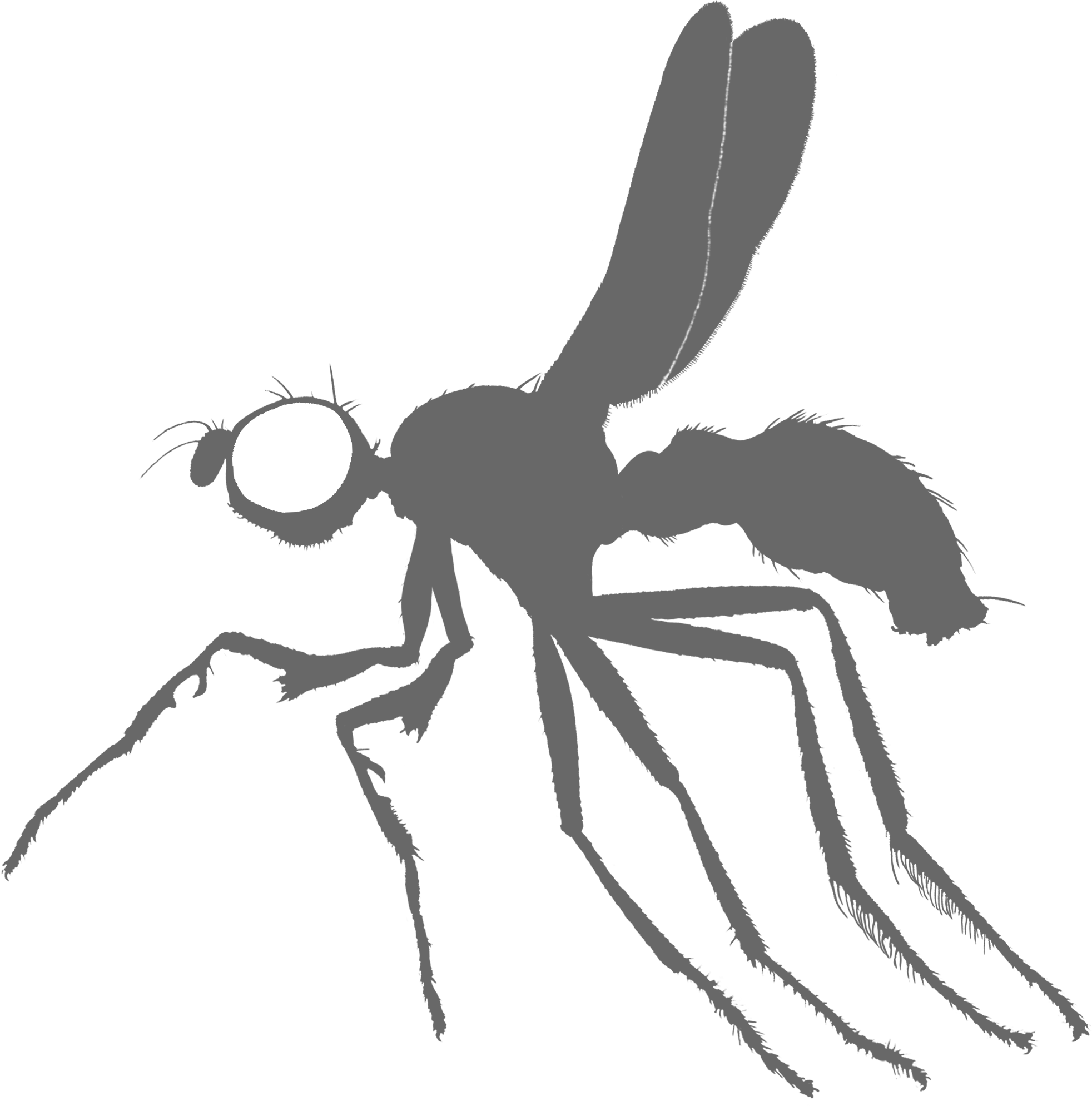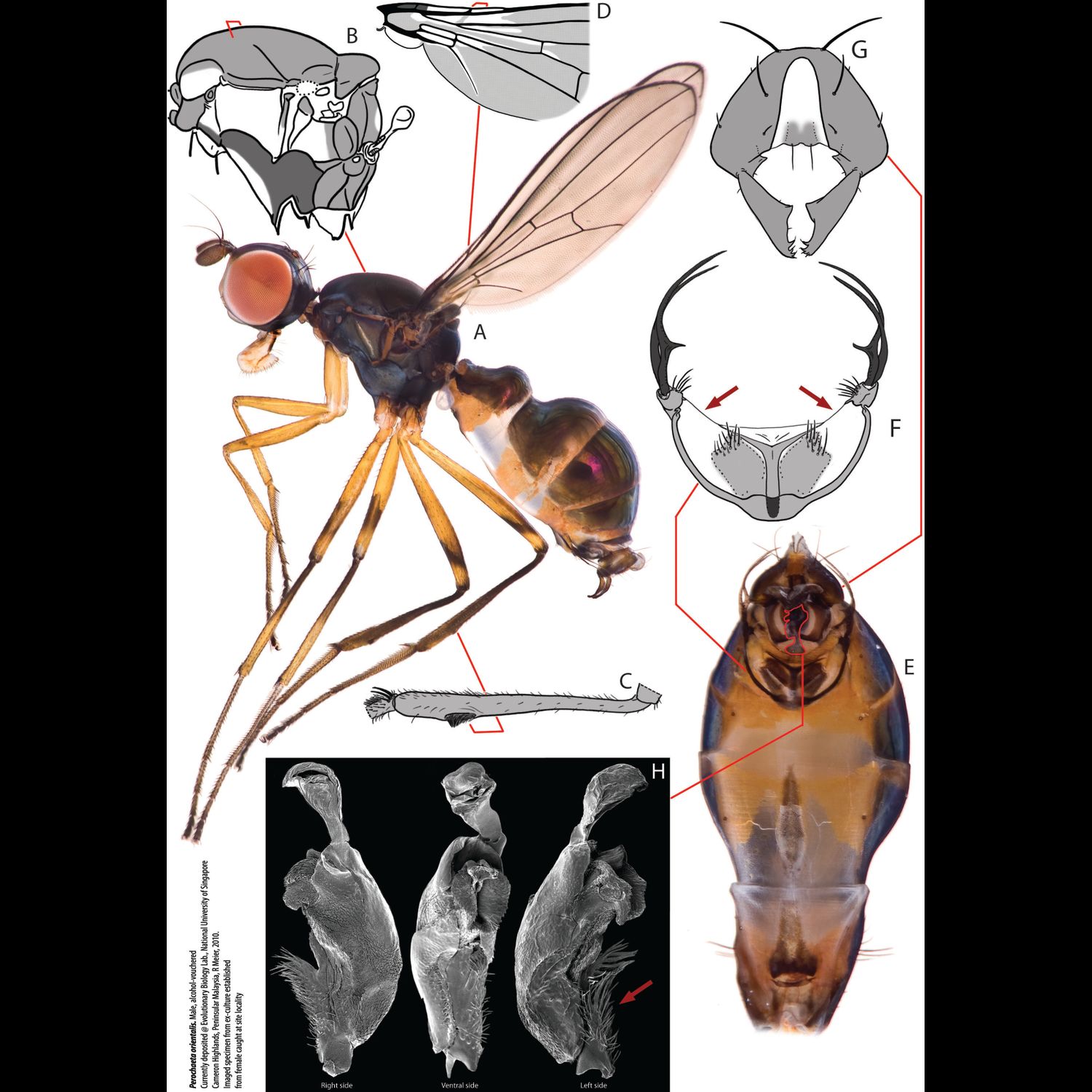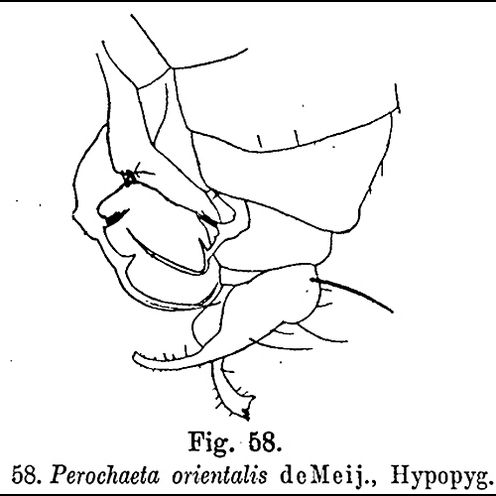

Male

Perochaeta orientalis. Male alcohol-vouchered specimen.
Deposited at: Evolutionary Biology Laboratory, National University of Singapore (Singapore)

Diagnostic illustrations for adults
Adapted from:
Duda O (1926). Monographie der Sepsiden. (Dipt.). II. Annalen des Naturhistorischen Museums in Wien 40: 1-110.
Male Perochaeta orientalis are most easily differentiated from other described Perochaeta species based on two large, flattened bristles of the main tuft on the sternite appendage, of which one has a triangular, submedial protrusion (red arrows on main figure) while all other described Perochaeta species have unmodified bristles. The surstylus in Perochaeta orientalis is also unique in that the median inward protrusion consists of a large, broad-based triangle that spans a third of the surstylus.
Source:
Adapted from Ang et al. 2013
Sepsidae: Sepsinae: "Lower sepsids": Perochaeta
Holotype currently kept in the Hungarian Natural History Museum, Budapest, Hungary (MTMB), which strongly reflects the drawing made by Duda (1926).
Source:
Adapted from <a href="https://www.ncbi.nlm.nih.gov/pmc/articles/PMC3867187/">Ang et al. 2013</a>
PEROCHAETA ORIENTALIS de Meijere 1913 (as Nemopoda). Taiwan: Chip-Chip. Holotype ♂, in Magyar Természettudomanyi Museum Allattara, Budapest, Hungary.
Source:
Ozerov 2005, World Catalogue of the Family Sepsidae (Insecta: Diptera), Zoologicheskie issledovania 8.
Oriental: Taiwan, Indonesia (Sulawesi Is.), Malaysia (East Malaysia, West Malaysia), Philippines (Luzon Is., Mindanao Is.).
Source:
<a href="https://www.ncbi.nlm.nih.gov/pmc/articles/PMC3867187/">Ang et al. 2013</a>
Distributional Discussion
As discussed in Ang et al. (2008), the species in this genus appear to be only found in mid- and high-elevation localities in Asia above 650m ASL: Perochaeta dikowi was found on Fraser’s Hill, Malaysia (1300m ASL; Ang et al. 2008), Perochaeta hennigi is only known from Thawalamtenne, Sri Lanka (670m ASL; Ozerov 1992) and Tamil Nadu, India (1200m and 1400m ASL; Iwasa and Tewari 1994). The type locality of Perochaeta orientalis is the Jiji Township in Taiwan (“Chip-chip” as designated by de Meijere; Duda 1926) which is within the Chung Yang mountain range that has an average elevation >1000m ASL, and can also found in regions such as Indonesia (Seram Is., 750m; Iwasa 2001). The new species Perochaeta cuirassa and Perochaeta lobo were found at 2600m ASL. A male Perochaeta specimen from Flores Island, Indonesia, examined by Hennig (1941) was also collected from a mid elevation site (1200m ASL). Unfortunately, the latter was poorly preserved and could not be described, but based on Hennig’s illustration, it likely constitutes a new species. Given that Perochaeta species are restricted to elevated sites, we predict that the number of species will rapidly grow as more mid and high elevation localities are sampled.
Source:
Known Ecology
Perochaeta, like most sepsid species, are attracted to dung, carrion, and other malodorous, decaying organic substrates (Pont and Meier 2002); i.e., by using different substrates in different microhabitats, the sepsid fauna from a specific locality can be quickly explored.